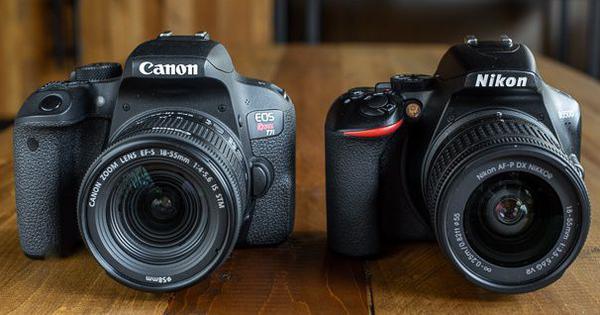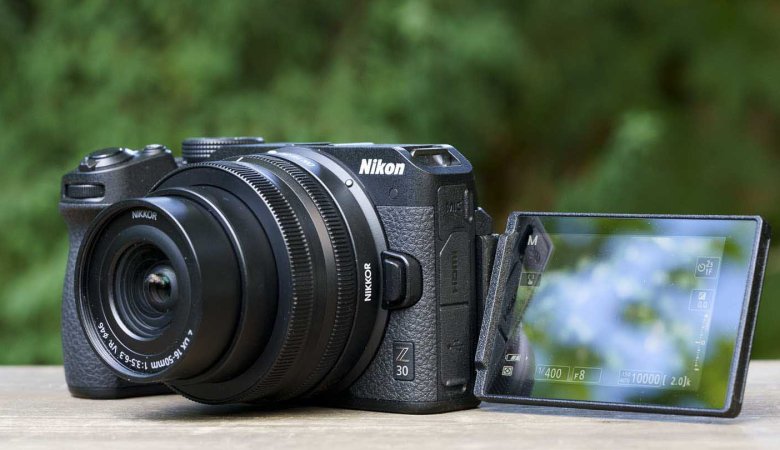Don’t you think image quality, focusing skills, and versatility naturally take center stage when choosing a DSLR camera? But battery life is a crucial issue that frequently goes overlooked and directly impacts how you can record situations without pausing. In this thorough comparison, we examine the battery life capabilities of two well-liked entry-level DSLRs, the Nikon D3500 and the Canon T7.
We seek to provide a comprehensive understanding of which camera offers a longer-lasting shooting experience, accommodating different photography preferences by examining their respective battery capacities, assessing their endurance in various shooting scenarios, considering battery-saving features, and exploring potential workarounds.
Detailed Comparison of Nikon D3500 vs. Canon T7 Battery Life
1. Nikon D3500 Battery Life
The Nikon D3500, which has an EN- EL14a rechargeable lithium-ion battery, can take approximately 1550 pictures on a single charge, which is excellent battery life. The D3500 is a fantastic option for photographers who shoot continuously for lengthy periods or go on photography adventures where it is impractical to change batteries frequently. This high number of shots makes it possible for photographers to capture many images without worrying about running out of battery.
2. Canon T7 Battery Life
The LP-E10 rechargeable lithium-ion battery used in the Canon T7 provides respectable performance while not having the same battery life as the D3500. The Canon T7 can take about 500 pictures on a single charge. Although this number may appear to be less than the battery life of the D3500, it’s essential to realize that the Canon T7’s battery capacity meets the requirements of many casual photographers and those who usually shoot for shorter periods.
3. Factors Affecting Battery Life
Several variables affect the battery life of both the Nikon D3500 and Canon T7. Battery drain is mainly by continuous photography, frequent use of the built-in flash, or video recording. Higher energy usage is also a result of features like live view mode, Wi-Fi connectivity, and regular use of the LCD screen for image playback. Regardless of the camera model, considering these aspects enables users to maximize battery life.
4. Shooting Scenarios and Real World Implications
The Nikon D3500’s longer battery life is a substantial perk for photographers who routinely shoot for a long time. The D3500’s capacity to shoot continuously for long periods without frequently needing to be recharged may be of great use to landscape photographers, event photographers, and tourists. On the other hand, enthusiasts and photographers whose sessions are shorter or more sporadic can benefit from the Canon T7’s battery life.
5. Battery Saving Features and Workarounds
The Nikon D3500 and the Canon T7 have built-in battery-saving capabilities to prolong their active shooting time. Battery performance can improve by turning on power saving, turning off extra features, and using external power packs can be practical alternatives that prepare you for extended photography sessions.
Comparison Between Nikon D3500 vs. Canon T7 Battery Life
- Use the optical viewfinder rather than the LCD screen to compose your photographs to save battery life.
- Wi-Fi must be turned off when not in use to avoid needless power consumption.
- Sparingly use external flash because continuous usage of the built-in flash can quickly drain the battery. For improved lighting control, think about using an external flash.
- In cold conditions, battery life may be reduced. To keep spare batteries functioning, keep them warm.
- When taking time-lapse photos, use interval shooting to conserve energy and get gorgeous sequences.
Conclusion
All in all, the Nikon D3500 vs. Canon T7 battery life comparison reveals each camera’s distinct advantages for accommodating various photographic preferences. The D3500 is distinguished for its remarkable durability and impressive 1,550 shot capacity, making it the perfect companion for prolonged shooting sessions and situations with restricted access to charging facilities. For photographers who need a reasonable battery life and shoot for shorter periods, the Canon T7’s approximately 500-shot capacity delivers a dependable shooting experience.
The choice between the Nikon D3500 and the Canon T7 should consider several critical criteria, including quality, autofocus capabilities, overall user experience, and battery life, which is an important consideration.
Ultimately, the Nikon D3500 and Canon T7 provide competitive choices for beginning photographers looking for a dependable DSLR camera, regardless of whether you favor long shooting times or want a healthy compromise between battery life and other capabilities.
Frequently Asked Questions
Will Battery Life Be Constant Across All Firing Scenarios?
Depending on usage, battery life changes. Compared to conventional photography, actions like continuous shooting, recording video, and using the live view mode frequently use more power.
What Methods May I Employ to Prolong Battery Life During Prolonged Shoots?
Enable power-saving settings, turn off extraneous features, and reduce LCD screen usage to prolong battery life. For extended sessions, having extra batteries or an external battery pack is a prudent precaution.
Are These Cameras Compatible with Aftermarket Batteries?
Yes, the Nikon D3500 and the Canon T7 are compatible with reliable third-party batteries. Choose reputable brands of aftermarket batteries to assure compatibility and safety.
How to Prevent Battery Damage in High Temperatures?
High temperatures may impact the performance of the battery. Avoid exposing the camera to direct sunlight and keep backup batteries in cool places. The camera should be turned off when not in use to avoid overheating.
Are the Batteries for The Canon T7 and Nikon D3500 Compatible?
The T7 uses an LP E 10 battery, whereas the D3500 uses an EN EL14a battery. These batteries cannot be used interchangeably due to design variations.







Leave a Reply